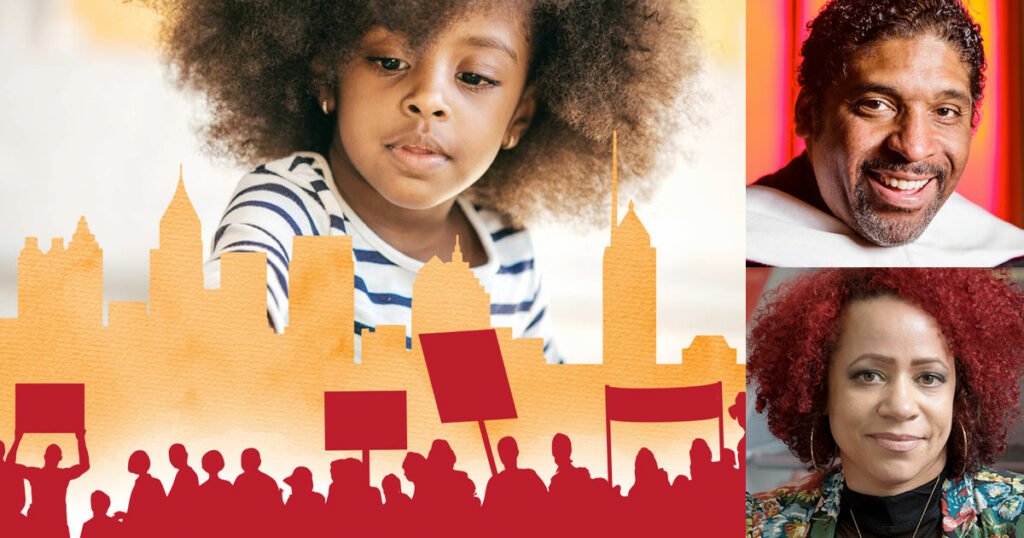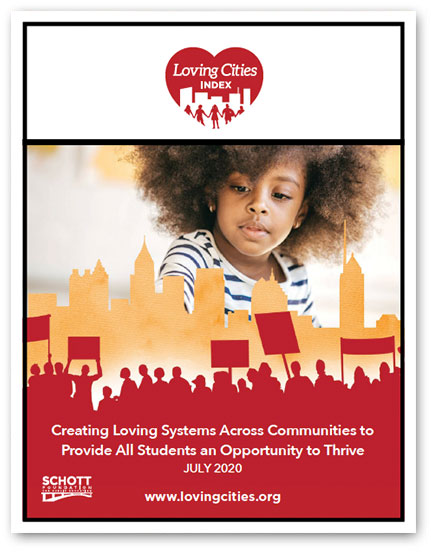Blog
Black History and the Search for a Loving City

The cause of racial justice extends across borders, issues, cultures, and economic sectors. This Black History Month, we encourage our partners and allies to renew our commitment to this insight and commit to funding, advocacy, and organizing strategies that encompass more than just single-issue causes. 
Schott has been on this journey for a long time. Schott started raising the alarm in 2004 about graduation rate disparities impacting Black male students the hardest. But students don’t simply live in schools: they live in neighborhoods, towns, and cities that owe them love and support as well. Since 2018, our Loving Cities Index has been a way for communities, philanthropy, and policymakers to better understand how interconnected our myriad social problems are — and how holistic our solutions must be.
A large and growing body of research shows a clear connection between economic and racial inequality and opportunity gaps in areas like housing, health care and community involvement.
By providing this new framework, the Loving Cities Index helps cities evaluate how well they are doing at providing all children – regardless of race, gender, or zip code – with the support and opportunities they need to learn and succeed. As Rev. Dr. William Barber wrote in the foreword to our 2018 Loving Cities Index report:
A large and growing body of research shows a clear connection between economic and racial inequality and opportunity gaps in areas like housing, health care, and community involvement. Yet, for more than three decades, too many city, state, and federal systems continue to implement and institute policies that create opportunity gaps for poor black, brown, and white students who have significantly lower levels of access to resources.
The COVID-19 pandemic has made the support that cities offer their children and families even more important. As Pulitzer Prize-winning journalist Nikole Hannah-Jones wrote in the foreword to our most recent Loving Cities Index report:
When public health departments first began releasing racial data on COVID-19 infections and deaths, it came as no surprise to those of us who have studied this country’s history that Black Americans would suffer the worst. Of course, an unprecedented global pandemic would hurt most of those who have been living under a 400-year racial one. The long shadow of slavery forced black Americans disproportionately into the type of service jobs that made workers more vulnerable to infection, it created the segregated neighborhoods full of environmental toxins that make Black Americans sicker at earlier ages, it ensured Black Americans experience a lack of quality healthcare options, that they rely heavily on public transit and live the crowded conditions that make social distancing impossible.
When public health departments first began releasing racial data on COVID-19 infections and deaths, it came as no surprise to those of us who have studied this country’s history that Black Americans would suffer the worst.
Our grassroots grantee partners are living these insights every day. Early last year, with vaccines still inaccessible to most Americans, the Kenwood Oakland Community Organization and allies won a campaign to stop the closure of Mercy Hospital in Chicago. The Journey for Justice Alliance’s new Quality of Life Agenda extends beyond the schoolhouse and knits together demands from across the spectrum: education, housing, safety, healthcare, food, and climate.
The history of Black liberation movements — all the way back to 1619 — has shown that, in Frederick Douglass’ words, “it must be a struggle. Power concedes nothing without a demand.” Let’s take this Black History Month to renew our commitment to making demands for racial justice, and to support those working tirelessly to make those demands a reality.


